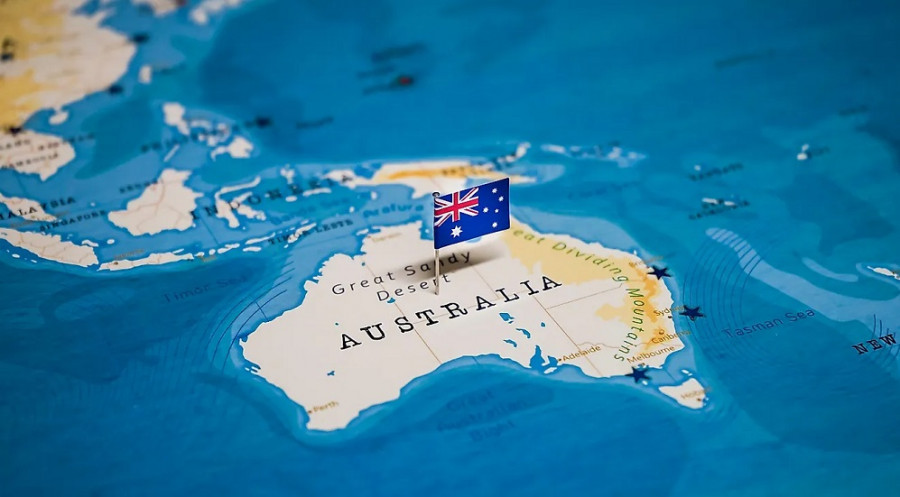
The Australian dollar continues to gain momentum against the U.S. currency, approaching the borders of the 68th figure. The AUD/USD pair demonstrated an upward trend throughout the past week, reacting to the results of the Reserve Bank of Australia's (RBA) May meeting. The regulator unexpectedly raised the interest rate by another 25 basis points after the April pause. At the same time, the central bank voiced fairly hawkish rhetoric, supporting the Australian currency.
Moreover, the upward trend of AUD/USD is due to the weakening of the greenback: the U.S. dollar index has returned to the area of the 100th figure, losing the positions gained last week. However, the Aussie is driving the pair's growth: the RBA's aggressive stance played a decisive role in determining the direction of the price movement.
Echo of the RBA's May meeting
After the announcement of the results of the RBA's May meeting, many journalists called the central bank's decision "shocking." In reality, this is not entirely true. The regulator indeed implemented the most hawkish of all the suggested scenarios, but many experts did not rule out such a course of events. The RBA hinted at this option during the April meeting, admitting the resumption of a hawkish course. Traders were apparently disoriented by the inflation growth in Australia, as per the latest data released. The report reflected a slowdown in the consumer price index, but the pace of decline leaves much to be desired. Therefore, this release could be interpreted differently: on the one hand, inflation is indeed decreasing; on the other hand, it is slower than desired.

In the end, the Australian regulator once again "went on the warpath": it not only raised the rate but also voiced unambiguous formulations, indicating a combative mood. In the accompanying statement, the central bank stated that board members remain determined to return inflation to the target level, as inflation at 7% is "still too high." At the same time, the central bank did not rule out further steps towards raising the rate: the final communique notes that further tightening "will depend on how the economy and inflation develop."
Last Friday, the RBA released its quarterly report, which examines the current economic conditions and forecasts for both the Australian and global economies in detail. This document also turned out to be on the side of the Aussie. In particular, the Reserve Bank pointed out that risks to inflation are "on the rise," given the low growth of labor productivity, rising energy prices, and a sharp increase in rental fees.
All this suggests that the Australian regulator may raise the interest rate again at one of the following meetings if inflation indicators decline too slowly or get stuck at current levels (let alone an upward trend). This fundamental factor provides significant support to the Aussie.
Greenback in anticipation
The U.S. currency, in turn, is awaiting the publication of key reports this week. On Wednesday, the U.S. will release the April Consumer Price Index; on Thursday, the Producer Price Index; and on Friday, the Import Price Index. If these indicators show a downward trend (with particular attention to the core CPI), the greenback will be under additional pressure. In anticipation of the main releases of the week, the U.S. dollar is likely to react to the strengthening/weakening of risk aversion in the market amid another "swing" in the U.S. banking system.
Meanwhile, the Aussie is awaiting data on retail sales in Australia, which will be published during the Asian session on Tuesday. In addition, AUD/USD traders will closely monitor China's trade balance data.
From a technical point of view, the pair is in the Kumo cloud on the daily chart, testing the upper Bollinger Bands line, which corresponds to the 0.6790 level. On the four-hour chart, the Ichimoku indicator formed a bullish signal, indicating the priority of an upward movement. The resistance level on this timeframe is also 0.6790 (the upper Bollinger Bands line on H4).
Conclusions
In my opinion, the AUD/USD pair has not exhausted its upward potential, primarily due to the divergence of the Fed and RBA rates. The Reserve Bank of Australia raised the rate contrary to opposite expectations and demonstrated a hawkish mood. The Federal Reserve also raised the rate by 25 basis points but made it clear that this is the last rate hike in the current tightening cycle—further steps in this direction are only possible if inflation in the U.S. starts to pick up again. That is why the upcoming inflation releases are so important for dollar pairs, and the AUD/USD pair is no exception.
Long positions on the pair should be considered after buyers break through the mentioned resistance level of 0.6790. In this case, the next target of the upward trend will be 0.6900, the upper border of the Kumo cloud on the weekly chart.